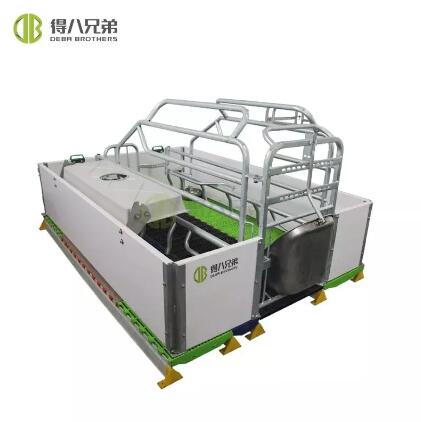Meeting Standards: Regulatory Requirements and Industry Certifications for European-Style Farrowing Crates
2024-02-22
In the realm of pig farming, ensuring the health, safety, and welfare of animals is of utmost importance. European-style farrowing crates, known for their focus on sow comfort and piglet well-being, must adhere to stringent regulatory standards and industry certifications to uphold best practices and ensure compliance. In this blog post, we'll explore the regulatory standards and industry certifications relevant to European-style farrowing crates, highlighting their importance in promoting responsible farming practices and ensuring consumer confidence.
Regulatory Standards
1. European Union Regulations: In the European Union (EU), farrowing crates must comply with regulations outlined in directives such as the Welfare of Farmed Animals Directive (2008/120/EC). These directives set minimum standards for the welfare of pigs, including requirements for housing, space allowances, and environmental enrichment. European-style farrowing crates must meet these standards to ensure the humane treatment of sows and piglets.
2. National Regulations: Each EU member state may have additional regulations or guidelines governing the use of farrowing crates. These regulations may vary in terms of specific requirements and implementation, but they generally aim to align with EU directives and promote consistent standards across member states.
3. Animal Welfare Codes of Practice: Many countries outside the EU have established animal welfare codes of practice or guidelines that address the use of farrowing crates. These codes often provide recommendations for housing, management practices, and environmental conditions to ensure the welfare of pigs throughout the farrowing process.
Industry Certifications
1. Animal Welfare Certification: Various certification programs focus on animal welfare standards and practices in pig farming, including the use of farrowing crates. Certifications such as the Certified Humane label or the RSPCA Assured scheme may include criteria related to farrowing crate design, space allowances, and enrichment provisions.
2. Quality Assurance Programs: Quality assurance programs offered by industry organizations or certification bodies often encompass farrowing crate standards as part of their criteria for ensuring product quality and safety. Producers may participate in these programs to demonstrate compliance with industry best practices and differentiate their products in the marketplace.
3. Environmental Certifications: Some certification programs address broader sustainability and environmental considerations in pig farming, which may include aspects related to farrowing crate design and management. Certifications such as Global Animal Partnership (GAP) or the Sustainable Agriculture Initiative Platform (SAI Platform) may evaluate the environmental impact of farrowing crate usage as part of their criteria.
Conclusion: Upholding Standards for Responsible Farming
In conclusion, regulatory standards and industry certifications play a crucial role in ensuring the responsible use of European-style farrowing crates in pig farming. By adhering to these standards and obtaining relevant certifications, producers demonstrate their commitment to animal welfare, consumer transparency, and environmental sustainability. As the pig farming industry continues to evolve, adherence to regulatory requirements and participation in certification programs will remain essential for upholding standards of excellence and fostering trust throughout the supply chain.



